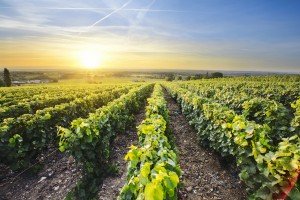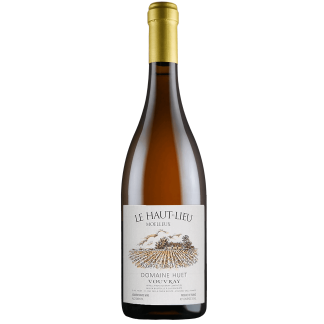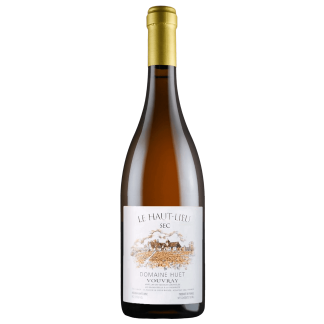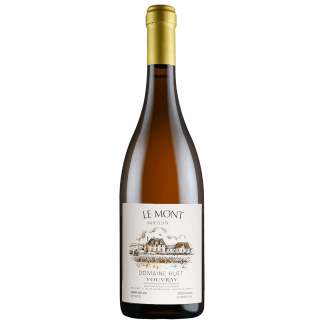Description
REVIEWS
“The biodynamic Huet estate comprises three key terroirs with clearly identifiable personalities … it is justly regarded as the leading property in the Vouvray region.” Clive Coates MW, The Great Wines of France
“No matter what the vintage or the wine style (including sparkling), the quality [chez Domaine Huet] is always extraordinary and clearly reflects the excellence of their terroirs. The chiseled, contoured mouthfeel and precise minerality are unique in the Loire.” La Revue du Vin de France
* * * Producteur de Qualité Exceptionnelle Le Classement 2019 (One of only seven Loire producers at this highest level)
HISTORY
Widely considered to be the single greatest Vouvray domaine and one of the foremost white wine producers in the world today, Domaine Huet should require little introduction. We are now very fortunate to have both Huet, the great, established benchmark of Vouvray, and François Chidaine, the ‘new’ star, in our stable. These are two of the finest producers of Chenin Blanc the world has seen.
Domaine Huet was founded in 1928 by Victor Huet, however it was his son, Gaston, who was to make this Estate one of the greatest France had ever known. Gaston worked with his father until 1937, after which he took full control. Over the next five decades, Gaston drove the Huet name to greater and greater heights. He inherited the Haut-Lieu vineyard and went on to purchase Clos du Bourg in 1953 and the Le Mont site in 1957. These three great terroirs were the foundations on which Domaine Huet’s reputation was forged. In 1971, Noël Pinguet, Gaston’s son-in-law, joined the Estate and another era began. Together, Gaston and Noël continued the progress of the estate. It was Pinguet who converted the vineyards to biodynamics in the late 80s, and put greater emphasis on the purity and precision of the wines. Jean-Bernard Berthomé, who at the time was chef du culture of Domaine Huet and is the Estate’s current winemaker, was the driving force behind the Huet’s advancement in biodynamic farming.
When Gaston Huet passed in 2002, Pinguet sought a financial partner and in 2003, Anthony Hwang, a New York based businessman, invested in the Estate. The Hwang family continued to work with Noël Pinguet for a decade until the latter’s retirement in 2012. Today the vineyards and cellars of the Estate are managed by Jean-Bernard Berthomé, who has played an integral role at Domaine Huet since 1979. Assisting Berthomé is Benjamin Joliveau, who has worked at the estate since 2008 and was hand picked by Noël Pinguet. Sarah Hwang heads up the business side of things in her role as President. It is really an exceptional team as anyone in the region will tell you. It seems clear that we have now entered yet another exciting era in the history of Domaine Huet. The Hwang family has already proven that they are committed to the continued, positive evolution of the Estate and have spared no expense to this end. As Francois Chidaine recently told us, the Huet legacy is “…in very good hands”.
WINES OF DOMAIN HUET
The wines of Domaine Huet are bottled and labelled according to their three vineyard sites which are described below. Each vineyard expresses unique characteristics and each can be made in 3 styles, subject to vintage conditions: Sec (bone dry), Demi-Sec (off dry, typically 10-20 g/lt residual) and Moelleux (slightly sweeter at approximately 30 g/lt). If the vintage allows, each vineyard may also produce a Moelleux 1er Trie (the first picking of botrytised berries) that produces a wine with residual sugar of about 60-100 g/lt and yet also with very high acidity. Like all great “sweet” wines of the world, the wines from demi sec onwards taste deceptively dry because of the terrific sugar/acid balance. These are excellent food wines and should not be thought of as “dessert wines” to be served exclusively at the end of the meal. Rather they are far better served throughout the meal or with delicate cheeses. The exception is the “super cuvee” Cuvee Constance which is only made in the greatest sweet wine years from a blend of the most concentrated botrytised fruit from all three vineyards. This is truly one of the great sweet wines of the world and is best served with dessert or cheese.
There are also some exceptional sparkling, pétillant, wines produced here with the dosage often coming from older demi-sec wines. These wines have a lighter bubble than traditional sparkling wines and are a wonderful alternative to Champagne. All the grapes for the wines of Domaine Huet are hand harvested with multiple passes or tries through the vineyard. This enables the selection of only the best bunches of clean fruit, for dry and sparkling wines, and shrivelled and botrytised grapes for the sweet wines. No malolactic fermentation and no new oak are used in the maturation process, with the aim being to retain the freshness and purity of the grapes for all the wines styles.
All of the wines of Domaine Huet are remarkable. They are fantastically aromatic and dance across the palate with a zest and an intensity that seems other worldly. They are constantly evolving both in the glass and in the bottle and are seemingly immortal. Huet wines from the 40s and 50s are still drinking wonderfully!
THE WINERY
The story of this illustrious Vouvray Estate pivots on an axis of three great single vineyards; on the enigmatic Chenin Blanc; on a unique limestone soil (tuffeau); and on a well-honed, perfectionist, viticultural and winemaking approach. Huet is a Domaine with a confluence of remarkable purity and power, and the ability to produce wines that can live and develop for 50-plus years. Each of Huet’s three famous single vineyards are capable of producing quality wines from dry to the lusciously sweet in a single vintage. Andrew Jefford comments that Chenin is “…among the finest white wines on earth, rivalled only for longevity, and for the beauty of its cellar metamorphoses, by Riesling.” We have previously compared Huet with the greatest German Estates but they also compare to the greatest Burgundy Domaines in terms of the attention in the vineyard and clarity of terroir expression. Vouvray’s DRC if you like, but in white.
The Biodynamic practices started in 1988 and by 1990 all of the vineyards were fully on board. Even before this period, no chemical herbicides or fertilisers were utilised. Grapes are today—and were always—picked by hand in multiple tries (or passes through the vineyard). This selection on the vines is followed on the sorting table. The fruit is then gently whole-bunch pressed, a famously slow and very gentle process. There is one day of settling and then the wine is put directly to either very old demi-muid (600L barrels) or sometimes tank. There are no additions (Huet never chaptalizes nor adds yeasts). Fermentation is stopped by refrigeration at the point where the perfect sugar/acid balance is achieved and the wine is bottled with a small dose of sulphur (25ppm).
VINEYARDS
Le Mont
Purchased in 1957, the steep and rocky eight hectare vineyard of Le Mont lies, like all of Huet’s vineyards, on Vouvray’s esteemed Première Côte—the bank of limestone-rich hillside vineyards overlooking Tours. The argilo-siliceux soil (stony, with green mineral clays and flint over limestone) of this block provides the tight structure and pungent minerality for which Le Mont is renowned. With different—and less—clay, and more stone than Le Haut-Lieu, this is a site that, dry or sweet, gifts the raciest, most mineral wines of the Estate. Mostly dry and off-dry whites produced from this vineyard.
Le Haut-Lieu
This was the Huet’s first Estate vineyard, purchased in 1928. Situated on the ‘Première Côte’, it’s a nine hectare plot on deep, brown, chalky clay, known locally as aubuis. Here the yellow limestone bedrock (tuffeau) lies as far as four metres down, making for a richer soil that produces round and supple wines that can drink very well young. It generally produces the earliest maturing of the three cuvées, and is usually the first to be ready for drinking. Saying that, like the Clos du Bourg and Le Mont, the wines can be extremely long-lived (certain vintages 50+ years!)
Clos du Bourg
Also perched on the Première Côte, just above the town of Vouvray, Clos du Bourg is a monopole and generally regarded as the greatest of the three Huet single vineyards. It has been farmed by the Domaine since 1953 (purchased in 1963). Arguably the greatest vineyard of the region, Clos du Bourg makes some of the most powerful, thrilling and long-lived white wines in Europe. With only one metre of topsoil over solid limestone, the vines tap almost immediately into the mineral resources underfoot. The warmth of the site, combined with the mineral complexion of the soils, results in rich and super long-lived wines that seem to effortlessly combine intense, charged minerality with generous texture and concentration. The walls that enclose this six hectare site help facilitate a more humid microclimate favourable to botrytis. For this reason—and notwithstanding the magnificent dry wines from the Clos—this Huet vineyard is the one that most often produces sweet wines from grapes affected by either botrytis or passerillage.









